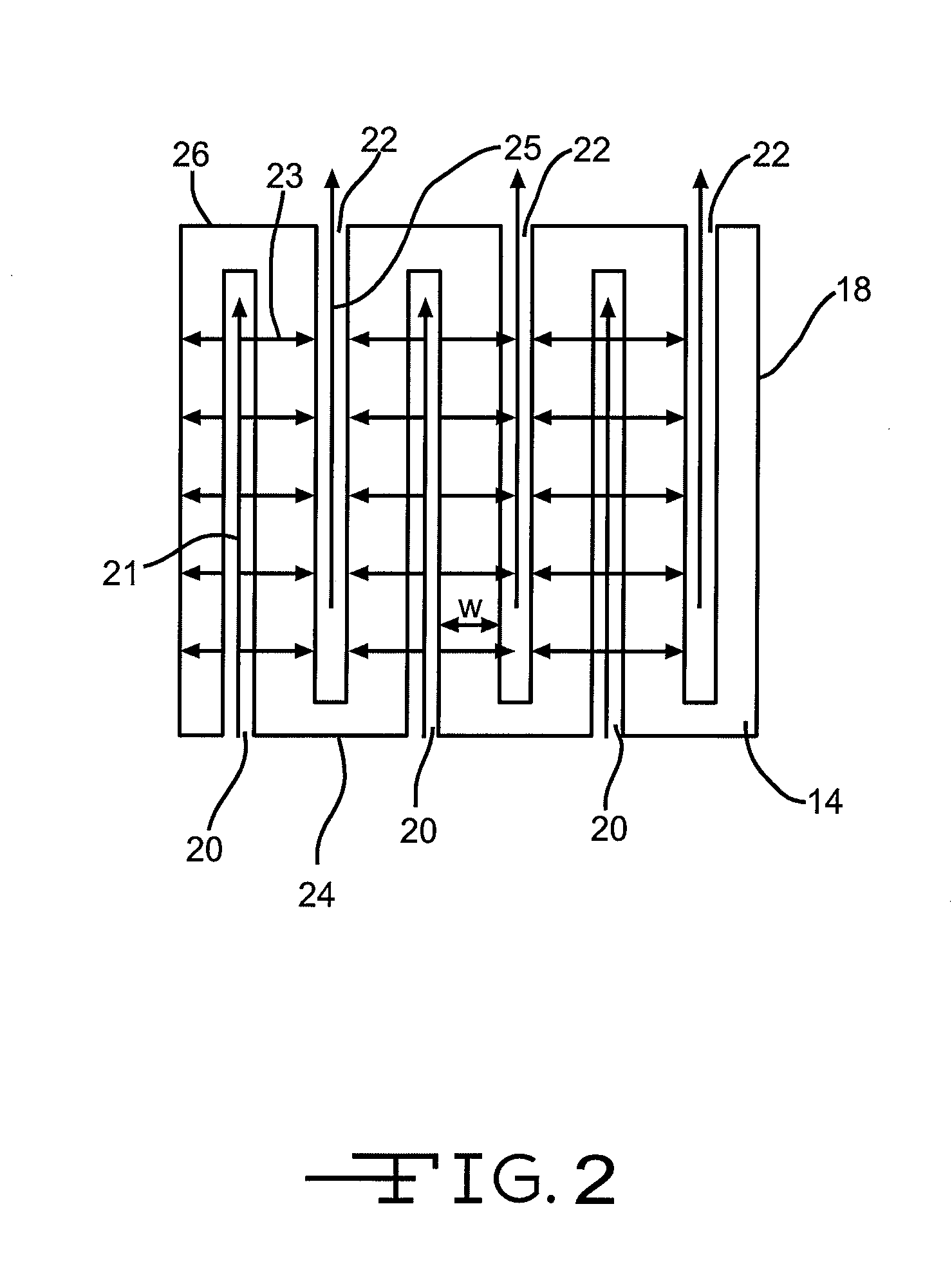Combined thermal protection and surface temperature control system
a temperature control system and thermal protection technology, applied in the direction of machines/engines, lighting and heating apparatus, laminated elements, etc., can solve the problems of thermal control problems, high coolant flow rate, and the inability to protect the underlying airframe structure from destruction
- Summary
- Abstract
- Description
- Claims
- Application Information
AI Technical Summary
Benefits of technology
Problems solved by technology
Method used
Image
Examples
Embodiment Construction
[0016]The following detailed description is of the best currently contemplated modes of carrying out the invention. The description is not to be taken in a limiting sense, but is made merely for the purpose of illustrating the general principles of the invention, since the scope of the invention is best defined by the appended claims.
[0017]In one embodiment of the invention, as depicted in FIG. 1, a thermally protected, surface temperature controlled apparatus 8 is provided. The thermally protected and surface temperature controlled apparatus 8 may comprise a thermal protection apparatus 10 which has an attachment side 18 which is attached, utilizing a RTV silicone adhesive, to a member 12 to which it is providing thermal protection from an environment hot flow 13. In other embodiments, the thermal protection apparatus 10 may be attached to the thermally protected member 12 utilizing any type of attachment mechanism. The thermally protected member 12 may comprise any type of surface...
PUM
| Property | Measurement | Unit |
|---|---|---|
| Size | aaaaa | aaaaa |
| Density | aaaaa | aaaaa |
| Porosity | aaaaa | aaaaa |
Abstract
Description
Claims
Application Information
 Login to View More
Login to View More - R&D
- Intellectual Property
- Life Sciences
- Materials
- Tech Scout
- Unparalleled Data Quality
- Higher Quality Content
- 60% Fewer Hallucinations
Browse by: Latest US Patents, China's latest patents, Technical Efficacy Thesaurus, Application Domain, Technology Topic, Popular Technical Reports.
© 2025 PatSnap. All rights reserved.Legal|Privacy policy|Modern Slavery Act Transparency Statement|Sitemap|About US| Contact US: help@patsnap.com



